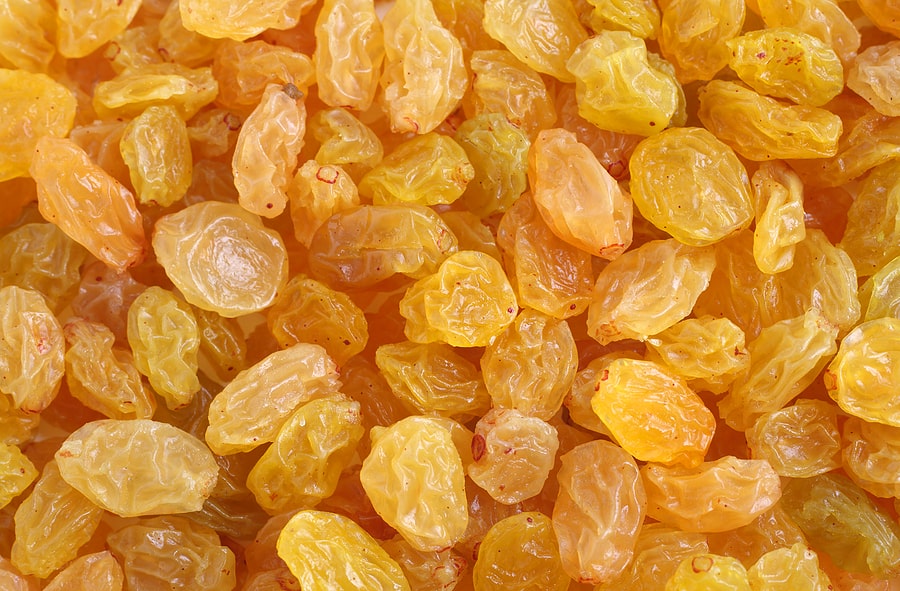 Golden raisins are moister and plumper than dark raisins. They make for delicious eating out of hand or can be added to rice pudding or as ice cream or pancake topping.
Golden raisins are moister and plumper than dark raisins. They make for delicious eating out of hand or can be added to rice pudding or as ice cream or pancake topping.
The Golden raisin is almost always a Thompson seedless grape that has been treated with sulfur dioxide and then artificially dried with the hot air from a flame.
Dark raisins—most of which also come from Thompson seedless grapes–are dried naturally in the sun for several weeks.
The Thompson seedless grape is a medium-sized grape with a thin, pale green to white skin. It is a very sweet, seedless grape.
The Thompson seedless grape—which gets its name from the late nineteenth century California grape grower William Thompson who planted it widely—is known in other parts of the world as the Sultanina or Oval Kishmish. Sultanina grapes originated in ancient Persia or Turkey.
There is a round—not oval—grape very similar to the Sultanina which is called the Sultana or Round Kishmish. The Round Kishmish or Sultana can develop a few seeds and has a higher acid content than the Thompson seedless. In the United States, the names Thompson seedless (which is really the Sultanina) and Sultana have been deemed legally synonymous.
Raisins made from Sultana or Sultanina grapes are called sultanas or sultanis in the Eastern Hemisphere. (The name sultana is from the feminine form of sultan.)
Also of interest:
How to Plant, Grow, Prune, and Harvest Grapes


